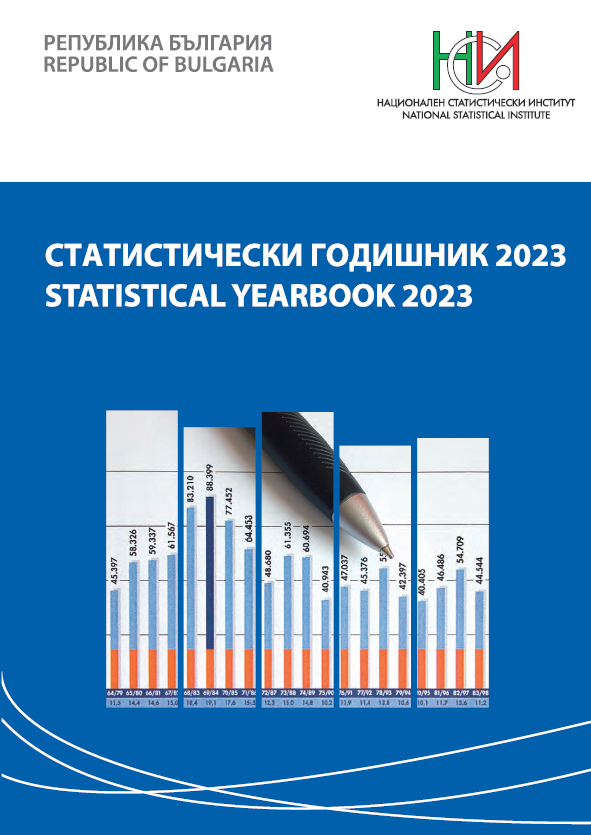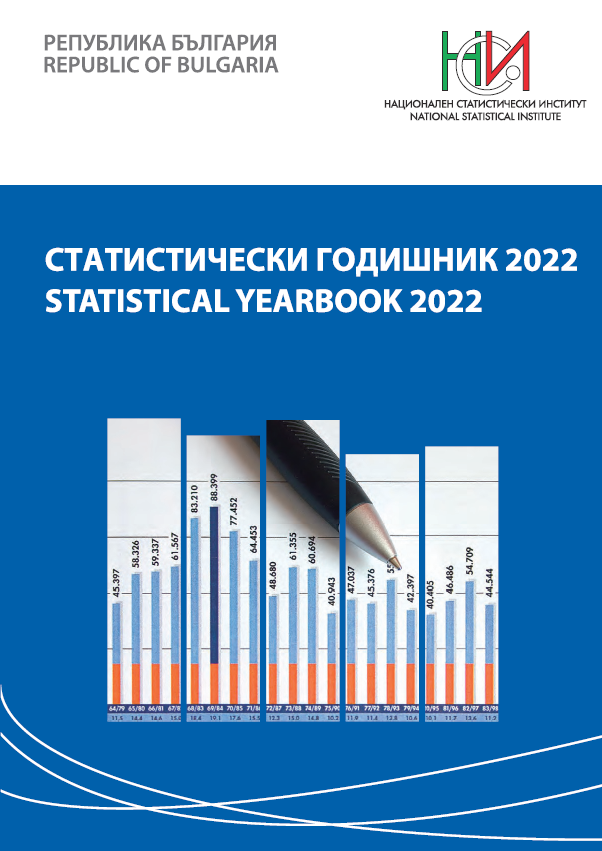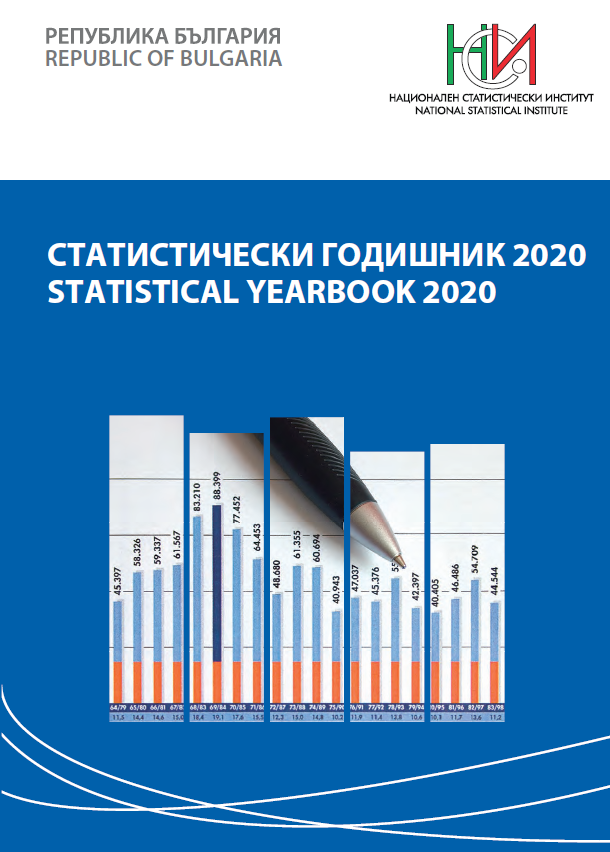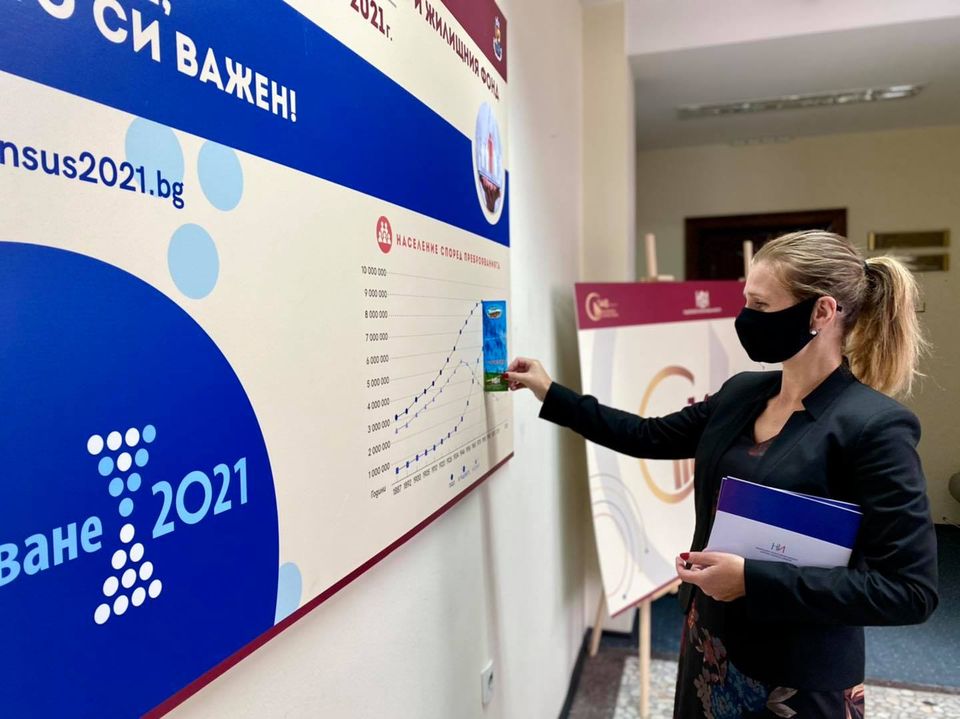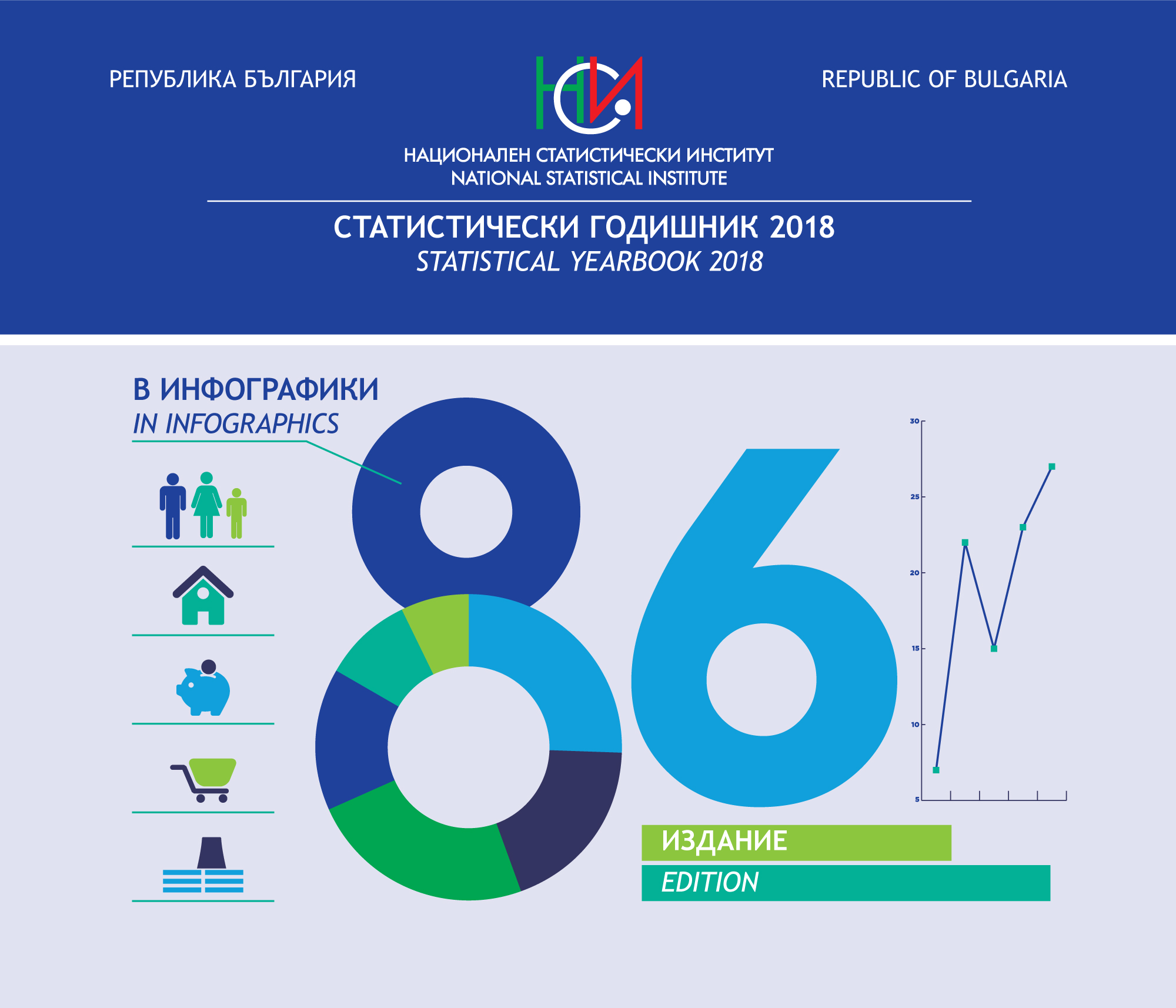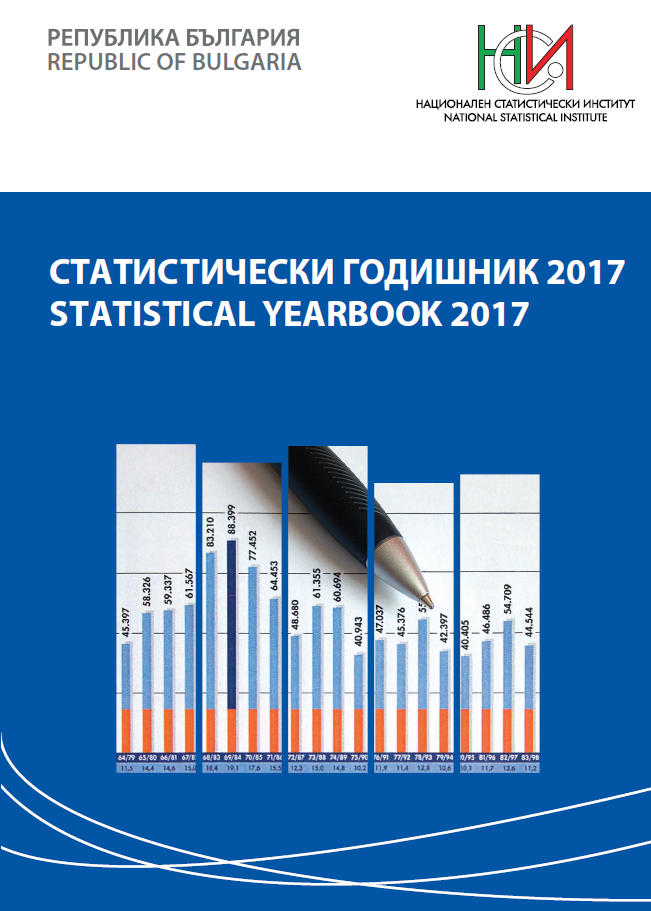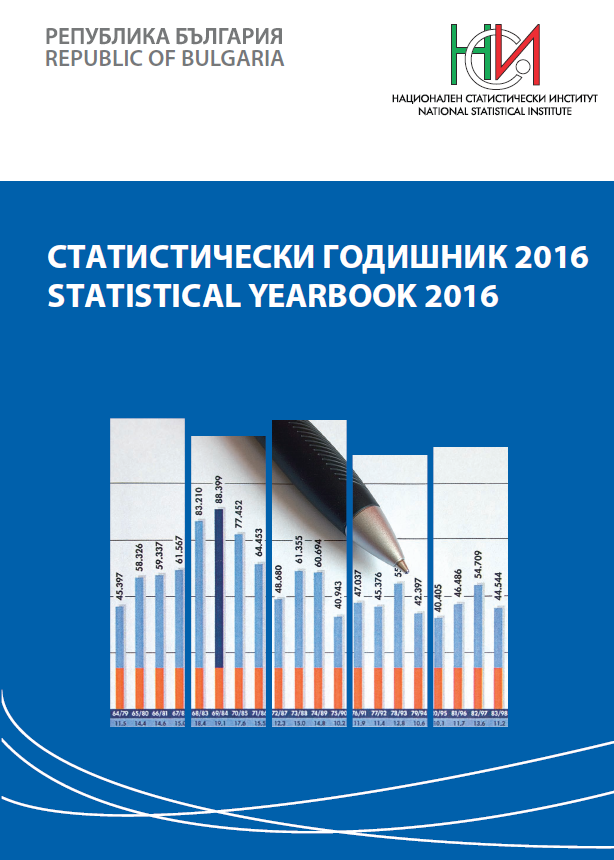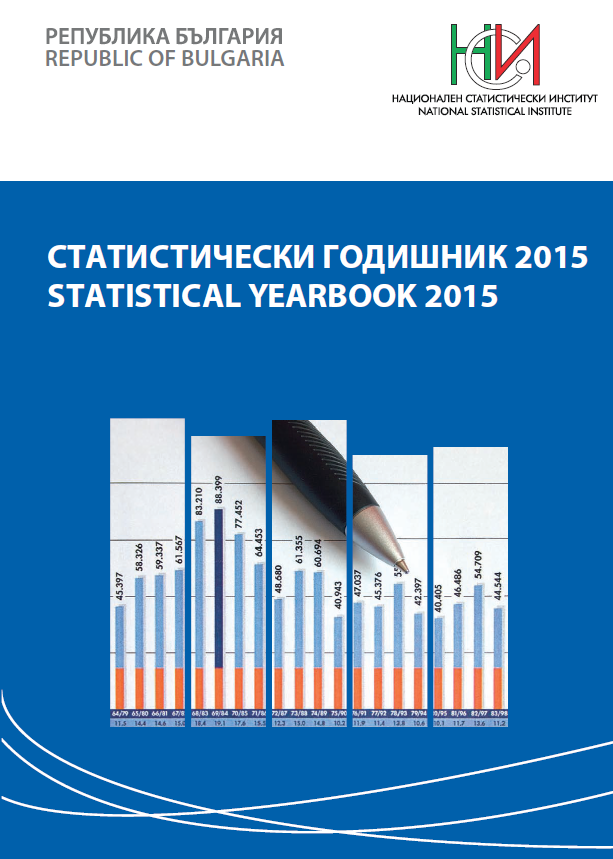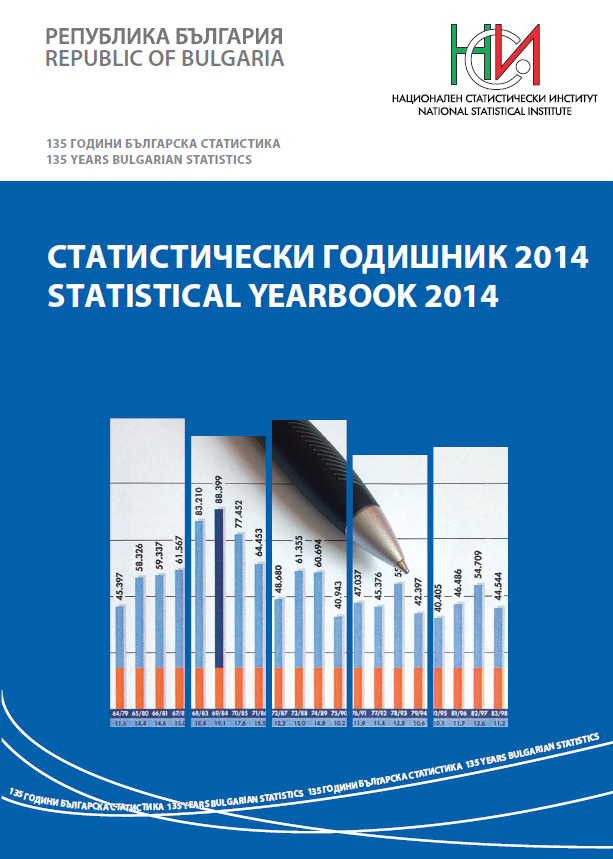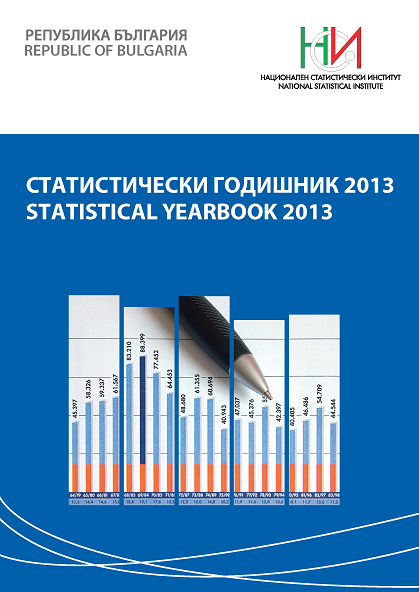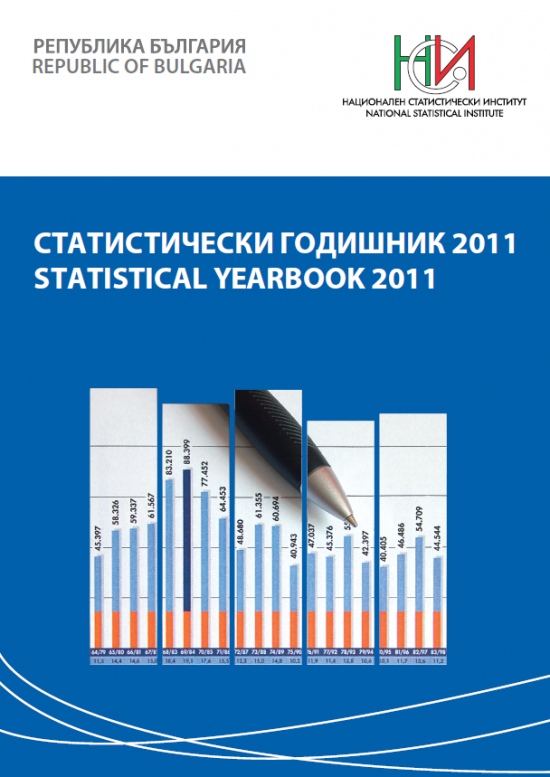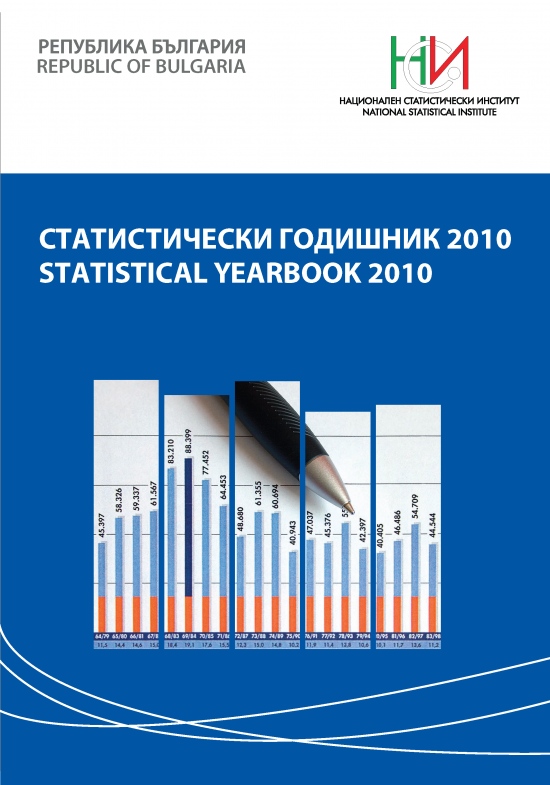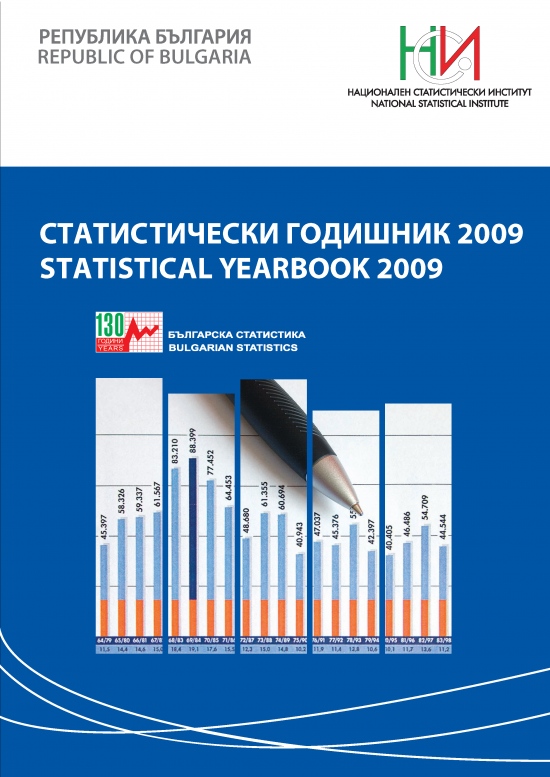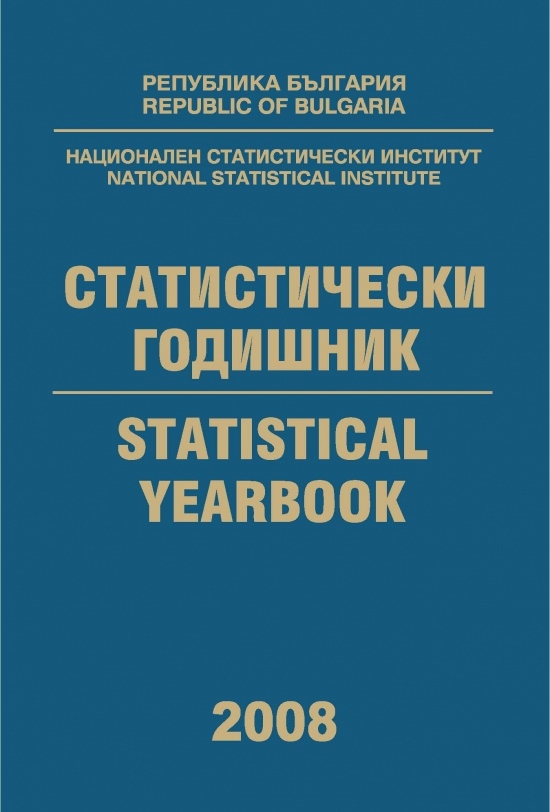Purchasing Power Parities
| Contact | |
|---|---|
| Contact organisation | EUROSTAT, the statistical office of the European Union/ National Statistical Institute - Bulgaria |
| Contact organisation unit | Eurostat, Unit C4: Price statistics; Purchasing Power Parities. Housing statistics / NSI, Consumer price, Housing prices and Purchasing power parities Division |
| Contact name | Rusin Rusinov - national co-ordinator Martin Somov |
| Contact person function | State experts - data collection (methodology) |
| Contact mail address | 2, P. Volov Str., 1038 Sofia, Bulgaria |
| Contact email address | |
| Contact phone number | +359 2 9857 456; +359 2 9857 715 |
| Contact fax number | |
| Metadata update | |
| Metadata last certified | 21 June 2021 |
| Metadata last posted | 21 June 2021 |
| Metadata last update | 21 June 2021 |
| Statistical presentation | |
| Data description | Purchasing power parities (PPPs) are indicators of price level differences across countries. PPPs tell us how many currency units a given quantity of goods and services costs in different countries. PPPs can thus be used as currency conversion rates to convert expenditures expressed in national currencies into an artificial common currency (the Purchasing Power Standard, PPS), eliminating the effect of price level differences across countries. The main use of PPPs is to convert national accounts aggregates, like the Gross Domestic Product (GDP) of different countries, into comparable volume aggregates. Applying nominal exchange rates in this process would overestimate the GDP of countries with high price levels relative to countries with low price levels. The use of PPPs ensures that the GDP of all countries is valued at a uniform price level and thus reflects only differences in the actual volume of the economy. PPPs are also applied in analyses of relative price levels across countries. For this purpose, the PPPs are divided by the current nominal exchange rate to obtain a price level index (PLI) which expresses the price level of a given country relative to another, or relative to a group of countries like the EU Member States. The production of PPPs is a multilateral exercise involving the National Statistical Institutes of the participating countries, Eurostat and the OECD. Indicators in Eurostat's dissemination database that are published on NSI website in the ECP domain: · Purchasing power parities (PPPs) scaled to the sum of expenditures of the EU Member States expressed in euro. This means that the PPP of one particular country indicates how many units of national currency one would need in that country in order to maintain the purchasing power of one euro in the EU; · Price level indices (PLIs) as defined above; · Nominal expenditure per inhabitant in Euro; · Real expenditure per inhabitant, defined as nominal expenditure divided by the PPP; · Volume indices of real expenditure per inhabitant. |
| Classification system | PPPs are produced in accordance with the final expenditure classification of the European Standard of Accounts (ESA 2010). PPPs are classified by type of final expenditure - actual individual consumption expenditure, actual collective consumption expenditure and capital expenditure - and, in the case of actual individual consumption expenditure, by purchaser - households, non-profit institutions serving households (NPISHs) and general government. The prices underlying the calculation of PPPs adhere to the definitions, concepts, classifications and accounting rules of ESA 2010. Basic headings and analytical categories For the purpose of the PPP calculation, the main expenditure aggregates comprising GDP are broken down into 276 basic headings. The basic heading is the lowest level of aggregation, at which products are sampled and product prices collected. It is the lowest level for which countries should provide numerical expenditure weights. Below the basic heading level are the individual items of the product sample. For example, cheese is a basic heading and cheddar, camembert, feta, gorgonzola, gouda, etc. are individual products within it. PPPs are published at the level of 61 analytical categories which comprise aggregates of basic headings and include some of the main expenditure aggregates like GDP, actual individual consumption, household final consumption, collective consumption and gross fixed capital formation. COICOP 5 - PPP; COFOG; COPNI; CPA; ISCO'08 |
| Sector coverage | PPPs are calculated for GDP and its various sub-aggregates on the expenditure side of national accounts. |
| Statistical concepts and definitions | Purchasing power parities In their simplest form PPPs are price relatives that show the ratio of the prices in national currencies of the same good or service in different countries. For example, if the price of a hamburger in France is 3.11 euros and in the United Kingdom 1.94 pounds, then the PPP for hamburgers between France and the United Kingdom is 3.11 euros to 1.94 pounds, or 1.60 euros to the pound. This means that for every pound spent on hamburgers in the United Kingdom, 1.60 euros would have to be spent in France to obtain the same quantity and quality - or, in other words, the same volume - of hamburgers. Therefore, to compare the volumes of hamburgers purchased in the two countries, either the expenditure on hamburgers in France can be converted to pounds by dividing it by 1.60, or the expenditure on hamburgers in the United Kingdom can be converted to euros by multiplying it by 1.60. PPPs can refer to a single product, a product group, or the economy as a whole. In moving up the hierarchy of aggregation, the PPPs refer to increasingly complex assortments of goods and services. Thus, if the PPP for GDP ("the economy as a whole") between France and the United Kingdom is 1.39 euros to the pound, it can be inferred that for every pound spent on the GDP in the United Kingdom, 1.39 euros would have to be spent in France to purchase the same volume of goods and services. Purchasing the "same volume of goods and services" does not mean that exactly identical baskets of goods and services will be purchased in both countries. The composition of the baskets will vary between countries and reflect differences in tastes and cultural backgrounds, but both baskets will, in principle, provide equivalent satisfaction or utility. Derived indicators PPPs are used to describe and analyse price level differences across countries. If PPPs are divided by the nominal exchange rate, a price level index (PLI) for each country and product group is obtained. At the level of GDP, PLIs express the general price level of a given country relative to another, or to a group of countries. In the example above, the PPP between France and the United Kingdom was 1.39. If, at the same time, the nominal exchange rate between the euro and the pound was 1.47 euros to the pound, the PLI of France would be 95 [(1.39 / 1.47) × 100], while the PLI for the UK, the base country, would be 100, implying that the overall price level in France is 5% lower than in the UK. "Real expenditure" or "expenditure in PPS" refers to an expenditure aggregate, for instance GDP or actual individual consumption, which has been converted to a common, technical currency ("Purchasing Power Standard" or PPS) and a common price level using PPPs. This conversion results in a set of data that is comparable across countries, and expresses the relative volume underlying each country's expenditure. If the real expenditure on, for instance, GDP is divided by the number of inhabitants in each country, the resulting real expenditure per inhabitant can be used as an indicator of the relative standard of living of the inhabitants of each country. It should be noted that real expenditures of the components of GDP do not add up to real GDP, due to the calculation method applied to aggregate PPPs (see section 20.5). Since we are referring to the standard of living relative to another country, or group of countries, it is often preferable to express GDP per capita in PPS as volume indices per capita, fixing the value of one country or group of countries at 100. Thus, if the volume index of GDP per capita in one country is 110, while that of the EU Member States is set at 100, the volume of GDP per capita in that country is 10 percent higher than in the EU Member States as a whole. |
| Statistical unit | PPPs are calculated for each of the participant countries in European comparison program, for the EU as a whole, and for the Euro area. There is no regional breakdown. |
| Statistical population | The expenditure side of national accounts, as defined in ESA '2010, defines the statistical population. |
| Reference area | Eurostat is in charge of the annual calculation and dissemination of PPPs for 37 European countries. These include the 27 EU Member States, the United Kingdom, the 5 candidate countries (Montenegro, Republic of North Macedonia, Albania, Serbia and Turkey), 3 EFTA Member States (Iceland, Norway and Switzerland) and 1 potential candidate country (Bosnia-Herzegovina). In Eurostat's dissemination database, PPPs for Japan and the United States are included for reference as well, although these are computed by the OECD. |
| Time coverage | Coverage over time in Eurostat's database is as follows (in NSI back to 2000):
|
| Base period | Not applicable, because PPPs are primarily spatial indicators. |
| Unit of measure | |
PPPs can be interpreted as the exchange rates of countries' national currencies against the PPS. They express the number of currency units per PPS. Real expenditures are expenditures in national currency converted to PPS using PPPs. They are thus denominated in PPS. PLIs and volume indices per capita are indices that, in Eurostat's database, use EU27_2019, EU28, EU27 and EU15 as "base country" (EU27_2019=100, EU28=100, EU27=100 and EU15=100 and depending on the user's choice). In NSI publications indices are based at EU27_2019=100. | |
| Reference period | |
The reference period is the calendar year. In Eurostat's database, data is available back to the reference year 1995, though not for all 37 countries and all 61 categories. NSI disseminates data back to 2000. | |
| Institutional mandate | |
| Legal acts and other agreements | The common rules for the provision of basic information (input data), the calculation and dissemination of PPPs are laid down in Regulation (EC) No 1445/2007 of the European Parliament and of the Council of 11 December 2007. In addition, Commission Regulation (EU) No 193/2011 of 28 February 2011 defines common quality criteria and the structure of the quality reports. In this 2013 report, the Commission reported to the European Parliament and the Council on the implementation of the basic Regulation. Commission Regulation (EU) No 2015/1163 of 15 July 2015 provide a new classification of basic headings that has been implemented in December 2015. Within the framework of the Regulation, the methodologies and the publishing policies are decided by the PPP Working Group. The results as calculated by Eurostat are distributed to the NSIs for validation and approval prior to dissemination. |
| Data sharing | All data that enters the calculation of PPPs are available to the participating NSIs, but only for validation purposes. The PPPs as calculated by Eurostat enters the calculation of PPPs for the OECD Member States and countries affiliated with the OECD, as well as the calculation of global PPPs undertaken by the World Bank and the IMF. |
| Confidentiality | |
| Confidentiality - policy | Regulation (EC) No 223/2009 on European statistics (recital 24 and Article 20(4)) of 11 March 2009 (OJ L 87, p. 164), stipulates the need to establish common principles and guidelines ensuring the confidentiality of data used for the production of European statistics and the access to those confidential data with due account for technical developments and the requirements of users in a democratic society. |
| Confidentiality - data treatment | The PPP exercise is a multilateral statistical undertaking, in which the quality on each country's results is depending on all the other participating countries as well as on its own data. Therefore, it is important that all input data is available, for validation purposes, to all NSIs involved. Since individual price observations are confidential, only average prices are exchanged among countries for this purpose. |
| Release policy | |
| Release calendar | First estimates of PPPs and related indicators for the preceding year are released in June each year. In December, these indicators are recalculated and released for the three preceding years. NSI publishes the results after they are released by Eurostat. |
| Release calendar access | Not applicable. |
| User access | In line with the Community legal framework and the European Statistics Code of Practice Eurostat disseminates European statistics on Eurostat's website respecting professional independence and in an objective, professional and transparent manner in which all users are treated equitably. The detailed arrangements are governed by the Eurostat protocol on impartial access to Eurostat data for users. The data to be published are screened and approved by the participating countries. |
| Frequency of dissemination | |
Twice yearly. | |
| Accessibility and clarity | |
| News release | News releases published online in June and December each year, focusing on volume indices per capita at the level of Actual Individual Consumption or price level indices for household final consumption expenditure. NSI publishes on its website (www.nsi.bg) in the domain European Comparison Programme. |
| Publications | Eurostat publishes News releases on:
Statistics explained articles:
After official release by Eurostat Bulgarian NSI publishes PLIs and GDP volume indices per capita in: · Statistical Yearbook of Bulgaria; · Statistical reference book of Bulgaria. |
| On-line database | Eurostat produces the information and maintains the PPP database: The PPP domain of Eurostat's database can be accessed under 'Economy and finance'-'Prices' - 'Purchasing power parities': http://ec.europa.eu/eurostat/data/database PPPs at the level of GDP, as well as a number of volume indicators ("real expenditures"), are also accessible from the national accounts domain: "Economy and finance"-"National accounts"-"Annual national accounts". The disseminated indicators by NSI are accessible on-line in the respective domains: · European Comparison Program: https://www.nsi.bg/node/5186 . Bulgaria and EU: https://www.nsi.bg/node/806 |
| Micro-data access | Results below the level of the analytical categories are generally not disseminated to the general public. |
| Other | Not applicable |
| Documentation on methodology | The latest version of the "EUROSTAT-OECD Methodological manual on purchasing power parities" is available online. |
| Quality documentation | All participating countries produce detailed inventories of the data sources and methods applied in the provision of PPP data. In addition, countries provide quality reports ("survey reports") to Eurostat following the finalisation of each price survey for consumer and capital goods. These reports are intended for internal use among the participants, and serve primarily the preparation of forthcoming surveys. |
| Quality management | |
| Quality assurance | All data provided by participating countries undergo a detailed multilateral validation process, described in detail in the PPP Manual. |
| Quality assessment | The inventories produced by the countries, are used by Eurostat for in-depth assessment of the countries' sources and methods, in line with Regulation 1445/2007. The outcome of these assessments are released on Eurostat's website: http://ec.europa.eu/eurostat/web/purchasing-power-parities/methodology/assessment |
| Relevance | |
| User needs | Regional GDP in PPS is used to determine the regions eligible for financial support from the EU Structural Funds. Furthermore, indicators derived from PPPs are used for a wide range of analytic purposes, often providing background information for policymaking in the European institutions, in international organisations like the International Monetary Fund and the World Bank, and in national governments. Some users typically request PPP data at a more detailed level than currently published. At present, data below the level of the 61 predefined analytical categories are not published. Changing this in order to better accommodate user needs would require considerable changes to the current methodology and to the organisation of the exercise. |
| User satisfaction | The user needs and their satisfaction with the PPP data and services are broadly covered by the general Eurostat User Satisfaction Survey carried out every year. The most recent reports can be found at https://ec.europa.eu/eurostat/web/quality/general-evaluation-results . The results for the PPPs programme are covered under the price statistical area. |
| Completeness | All indicators are calculated and published by Eurostat for all the 37 participating countries. NSI publishes a limited set of indicators for all 37 countries. |
| Accuracy and reliability | |
| Overall accuracy | The precision of PPPs increases with the level of aggregation. This means that the PPP (and thus also the PLI, real expenditure and volume index per capita) at GDP level will be more reliable, or precise, than the PPP for final household consumption or gross capital formation. Similarly, the PPP for final household consumption will be more reliable than the PPP for "food and non-alcoholic beverages", or "clothing and footwear", the latter two being sub-aggregates of final household consumption. The input data into the PPP compilation process comes from several sources, specifically, from special PPP price surveys and from national accounts. This makes it impossible to calculate any meaningful, numerical measure of error margins for PPPs. However, there is general agreement that PPPs, PLIs and other PPP-based indicators are not intended to establish a strict ranking of countries. The degree of uncertainty associated with the basic price and expenditure data, and the methods used for compiling PPPs, may produce errors that influence the ranking of countries, particularly when countries are clustered around a very narrow range of outcomes. PPPs and PPP-based indicators thus provide an indication of the relative order of magnitude of one country in relation to other countries in the comparison. As outlined above, this is more so at a low level of aggregation than in the case of, for instance, GDP or GDP per capita. |
| Sampling error | Not applicable. |
| Non-sampling error | In the consumer goods surveys, measurement errors can occur due to non-compliance with the strict definition of the products in the product sample, for instance with regard to package sizes or quality parameters. While the validation process aims at eliminating these errors by carefully comparing the price material provided by each country and evaluating its plausibility, some of these errors can be hard to identify, especially those related to quality. Similar problems can occur in other surveys as well, like the annual survey on compensation of public sector employees. Here, the problem stems from the heterogeneity of data sources across countries. While non-response from one particular statistical unit can usually be easily overcome by replacing that unit, and normally has a very limited impact at the level of the published categories anyway, a special problem does occur where no prices are available for a given product in one or more countries. In these cases, a price relative is imputed on the basis of the price relatives for other products. If a country does not report prices for any sample product in a given basic heading, the gaps are typically filled using the PPP of either a "similar", or of a hierarchical, basic heading. |
| Timeliness and punctuality | |
| Timeliness | PPPs for a given year (t) are published in four steps:
|
| Punctuality | PPPs are always released by Eurostat in June and December. The exact publication date is determined a few months in advance. |
| Coherence and comparability | |
| Comparability - geographical | PPPs are primarily spatial price level indicators, and the comparability of the results across countries can be assumed to be very good. |
| Comparability - over time | In essence, PPPs are spatial price level indicators, and thus primarily suitable in comparisons referring to several geographical locations at a given point in time. Unlike the item sampling and price collection that underlie consumer price indices (CPI), the sampling of items and the price collection for PPPs are not designed to capture price changes over time, but rather price differences across countries or other geographical units. If necessary, product samples will be changed between two consecutive surveys in order to maintain or improve comparability across countries. Survey methodologies may also change from one survey to the next, if this is deemed necessary to produce a spatial comparison of improved quality. Nevertheless, PPPs and PPP-based indicators may be used in inter-temporal comparisons under certain circumstances, provided that the results are interpreted with sufficient care. For example, while it certainly makes sense to follow the temporal development of volume indices for high-level aggregates like GDP or actual individual consumption, lower-level aggregates will typically show more volatility over time, induced partly by changes in product samples or methodology. Interpretation of time series The interpretation of a time series that includes PPPs should be guided by the purpose of the analysis. The "perfect", multi-purpose indicator that simultaneously captures both spatial and temporal aspects adequately simply does not exist. For example, a time series of PLI does not provide a reliable measure of the development of prices in a given country. For that purpose, the CPI should be applied instead. Similarly, if we want to compare the rate of price change in two or more countries, the Harmonized Index of Consumer Prices (HICP) is readily available, at least for most European countries. Accordingly, a time series of PLIs shows, for each consecutive year, the various countries' price levels in relation to each other, and provides a rough indication of how these relative price levels have developed. PPPs are primarily used to convert expenditures in different countries into a common currency and a common price level in order to ensure comparability. A current price time series of, for instance, GDP per capita, deflated by the current PPP of each year, ensures comparability of relative volumes across countries for each single year. However, the growth rates will not reflect real growth, since the expenditures are expressed in common, current prices. Still, when presented in index form (with, for instance, EU28=100) and per capita terms, they can be used as an analytical tool in temporal comparisons, but with caution. On the other hand, a time series of GDP per capita in fixed prices, deflated by the PPP of the base year, would produce both real volumes expressed in the same price level for all countries, as well as real growth rates. However, in many cases this approach is highly problematic, because price structures and price relatives across countries do change over time. The assumption of a fixed price relative (the PPP of the base year) is thus not a realistic one, especially in long time series. |
| Coherence - cross domain | PPPs and the PPP-derived indicators are accessible from two different domains in the Eurostat dissemination database: The PPP domain and the National accounts domain. PPPs, PLIs, expenditure data and volume indicators for the analytical categories can be found in the PPP domain, while PPPs for GDP, as well as expenditures and volume indicators for GDP and the main National accounts aggregates can be accessed from the national accounts domain as well. While the PPPs at the level of GDP are identical in the two domains, there are some important differences between the two sets of volume indicators. Whereas the expenditure data in the PPP domain is updated twice a year (in June and December), the National accounts domain is updated continuously as countries provide revised NA updates. For this reason, the national accounts domain provides the most up-to-date indicators of GDP and GDP per capita in PPS. On the other hand, the volume indicators in the price domain are based on aggregate-specific PPPs, while the national accounts domain uses the PPP for GDP to deflate not only GDP, but all sub-aggregates as well. This means that the volume indicators in the price domain are more suitable for aggregate-specific analyses than the data in the NA domain. For these reasons, the expenditure and volume indicators in the two domains may not be entirely coherent at any given point in time, although discrepancies will normally not be very substantial. On NSI website PPPs and related indicators are published in domain European Comparison program (ECP) |
| Coherence - internal | Not applicable. |
| Cost and burden | |
Since most NSIs use price collectors to obtain price data, and most other input data required are extracted from existing sources at the NSIs, no additional response burden is created for businesses. | |
| Data revision | |
| Data revision - policy | Following the calculation of the final PPPs for a given reference year, PPPs are no longer revised. However, in order to maintain the highest possible degree of coherence with national accounts, the entire time series of PPPs is rescaled to the latest national accounts aggregates twice a year, in June and December, and the database updated accordingly. In December 2016, following the introduction of ESA 2010, the full time series of PPPs was revised. |
| Data revision - practice | Not applicable. |
| Statistical processing | |
| Source data | Countries are required to carry out price surveys and provide price input data for household consumption, individual government consumption, collective consumption and gross fixed capital formation (investment goods and services). Reference (imputed) PPPs are used for NPISH consumption, inventories, and net exports. Household consumption For consumer (market) goods and services, special price surveys are carried out. The product sample is determined in collaboration among the participant countries, the OECD and Eurostat. The final product sample should consist of comparable goods and services and, to the largest extent possible, be equally representative of the expenditure patterns of all participant countries. Subsequently, the data collection is carried out by the NSIs. Prices are collected from a variety of outlets (markets, corner shops, supermarkets, specialist shops, departmental stores, service establishments, etc.), usually by actually visiting the shops, but also via questionnaires and phone or electronic surveys. In most countries, prices are collected only in the capital city and its surroundings. In order to obtain national average prices, these countries have to supply spatial adjustment factors for all basic headings. To reduce the response burden, prices are collected over a period of three years. The product sample is divided into six separate surveys, and each year, two surveys are carried out. In the calculation of PPPs, extrapolations of the most recent survey data are used for the product groups that were not surveyed in the reference year. A temporal adjustment factor at basic heading level, based on HICP data, is used for this purpose. A similar temporal adjustment is needed in order to calculate annual average prices for the whole reference year, based on the prices collected in the survey month. Housing receives special treatment. In most of the countries, a survey of actual rentals is carried out annually. For countries with unrepresentative rental markets, however, a "quantity approach" based on dwelling stock estimates is used instead. Government consumption The services produced by general government are non-market services and as such, they have no economically significant market price. Because there are no market prices, the convention is to value non-market services in national accounts at cost, or input prices. Consequently, this convention is applied in the production of PPPs as well, for collective services produced by government. Countries report the compensation of employees including social contributions for a sample of occupations in collective services provided by the government. These compensation figures then enter the calculation of PPPs as price estimates for collective services. In principle, the cost data should be national annual averages for each sample occupation, to be extracted from registers or other statistical sources. Countries that do not have access to such sources may base their cost estimates on the government salary scales that would apply to a "typical" employee. For education services, an approach based on direct estimation of volumes (number of students relative to total population) with quality adjustment based on the PISA survey is used. Student numbers are collected from the common education database of UNESCO, OECD and Eurostat. Under this approach, PPPs are derived indirectly, by dividing actual individual expenditure on education into the volume indicator. For health services, PPPs are based on a mixture of (quasi-)prices collected for hospital services, outpatient medical services and medical products. This is applied since reference year 2010. The PPPs for years before 2010 are based on the input cost approach. Gross fixed capital formation Countries report national purchasers' prices for investment goods and services. There are two price surveys, one for equipment goods (once every two years), and one for construction (annual). The prices collected are mid-year prices because it is too costly to monitor prices over the whole year. Prices for equipment goods are obtained from producers, importers, distributors or actual purchasers. The prices collected can be either purchasers' prices for actual market transactions or purchasers' prices for hypothetical market transactions - that is, what purchasers would pay if they made a purchase. Prices for construction are collected using a set of standard construction projects covering different types of buildings and civil engineering works. Prices for the projects are to be at the level of prevailing tender prices - that is, the prices of tenders that have been accepted by purchasers. Auxiliary data In addition to the prices and adjustment factors enumerated above, participating countries have to provide expenditure weights at basic heading levels, annual average exchange rates and mid-year resident population figures, as well as their most recent estimates of GDP and its main sub-aggregates. The expenditure weights are taken from the expenditure breakdown of national accounts. The survey methodology for each country is laid down by the NSIs and Eurostat in collaboration. |
| Frequency of data collection | The data collection is a continuous process. New input data is collected as follows:
|
| Data collection | Within the general framework of each price survey, as laid down in the methodological manual (cf. 11.1) and in the survey guidelines, countries have a degree of freedom as to how to conduct the data collection. The most common way of obtaining data is by visiting sales outlets. However, questionnaires, phone calls, internet and scanner data is also used. The price survey on Construction projects is a special case, since NSIs don't usually have the in-house expertise required to conduct this survey. Most countries thus rely on external construction experts to provide price estimates for the sample of construction projects. Same concerns the Equipment goods survey. Data on Rents and the Compensation of employees are usually collected from sources that already exist at the NSIs or in other government agencies. |
| Data validation | The validation of input data is an interactive process between National Statistical Institutes and Eurostat. |
| Data compilation | The calculation of PPPs is undertaken in three stages. The first stage is at the product level, where price relatives are calculated for individual goods and services. The second stage is at the product group (or basic heading) level, where the price relatives calculated for the products in the basic heading are averaged to obtain unweighted PPPs for that particular basic heading, and at the third stage, the basic heading PPPs are weighted and averaged to obtain weighted PPPs for each aggregation level. The weights used to aggregate the PPPs in this last stage are expenditures from each country's National Accounts. The calculation and aggregation of PPPs requires each participating country to provide 1) a set of national annual prices for the sample of products, and 2) a detailed breakdown of final expenditure on GDP according to a common classification. The calculation of basic heading PPPs is based on binary Fisher type indices for which both a Laspeyres type index and a Paasche type index must first be calculated based on the reported price data. Subsequently, PPPs are calculated for a basic heading using the Èltetö-Köves-Szulc (EKS) method. These PPPs for a basic heading are combined with those of other basic headings to provide weighted PPPs for each level of aggregation up to the level of GDP. The EKS method is applied at this stage as well. Explicit consumption weights are not applied when calculating parities for the basic headings but are taken into account at any higher level of aggregation. In principle, it would be desirable to weigh the price relatives within basic headings, but the expenditure data required to do this is not generally available. Instead, at the basic heading level, countries are required to differentiate between "representative" and "unrepresentative" products. A product in the product sample is said to be representative if it is purchased in sufficient quantities so that its price level is typical for that type of product in the national market. Failure to take representativity into account may produce a bias in the results, because representative products are generally assumed to have lower relative prices than unrepresentative ones. In order to avoid this bias, products that are representative are assigned a quasi expenditure weight of "1" and products that are not representative are given a quasi expenditure weight of "0". Sometimes, no prices are available for a basic heading and thus no parities can be calculated. In these cases reference parities will be used, i.e. parities initially calculated for a comparable basic heading. |
| Adjustment | Not applicable |
| Comment | |
Not applicable | |
Purchasing power parities and GDP per capita in 2024 (flash estimates)
In 2024, Luxembourg and Ireland recorded the highest level of GDP per capita in the EU, at 141% and 111% above the EU average. Bulgaria was the Member State with the lowest GDP per capita, at 34% below the EU average.
...Consumption per capita in purchasing power standards in 2023
Household material welfare varies widely in the EU
In 2023, the levels of actual individual consumption across EU countries varied between 70% and 136% of the EU-27_2020 average.
For Bulgaria, the per capita volume indices in PPS in 2023 increase compared to 2022 - for AIC from 69 to 70% and for GDP from 62 to 64%, compared to the EU-27_2020 average.
...Household consumption: price levels in 2023 in the EU
In 2023, price levels for household final consumption expenditure differed widely across the EU. The highest price levels were recorded in Denmark (143% of the EU average). The lowest levels were recorded in Bulgaria and Romania (both with 60%), according to the provisional estimates for 2023.
...Actual individual consumption per capita in 2023 in the EU
In 2023, actual individual consumption (AIC) per capita expressed in purchasing power standards (PPS) varied from 70% to 138% of the EU average across the 27 EU countries. In Bulgaria, the level was 26% below the EU average, according to the provisional estimates for 2023.
GDP per capita ranged from 64% to 239% of EU average. In 2023, GDP per capita in Bulgaria was 36% below the average for the EU-27.
...Purchasing power parities in Europe and the world in 2021
Purchasing power parities and GDP per capita in 2023 - flash estimate
In 2023, Luxembourg and Ireland recorded the highest level of GDP per capita in the EU, at 140% and 112% above the EU average. Bulgaria was the Member State with the lowest GDP per capita, at 36% below the EU average.
...Consumption per capita in purchasing power standards in 2022
Consumption per capita varied between 69% and 138% of the EU average. Between 2020 and 2022, Actual Individual Consumption (AIC) levels increased in 18 EU countries, most notably in Bulgaria (from 60% in 2020 to 69% in 2022 of the EU average).
...Household consumption: price levels in 2022
In 2022, price levels for household final consumption expenditure differed widely across the EU.
The highest price levels were recorded in Ireland (146% of the EU average), Denmark (145%) and Luxembourg (137%). Meanwhile, the lowest levels were recorded in Romania (58%), Bulgaria (59%) and Poland (62%).
...Actual individual consumption per capita in 2022
Purchasing power parities and GDP per capita - flash estimate
In 2022, Luxembourg and Ireland recorded the highest level of GDP per capita in the EU, at 161% and 134% above the EU average. Bulgaria was the Member State with the lowest GDP per capita, at 41% below the EU average.
...Consumption per capita in purchasing power standards in 2021
Consumption per capita varied between 65% and 144% of the EU average.
...Consumer price levels in 2021
In 2021, price levels for consumer goods and services differed widely across the EU Member States.
Widest is the gap for ‘Restaurants and hotels’ and ‘Alcohol and tobacco’.
...Actual individual consumption per capita in 2021
Purchasing power parities and GDP per capita - flash estimate
In 2021, Luxembourg and Ireland recorded the highest level of GDP per capita in the EU, at 177% and 121% above the EU average. Bulgaria was the Member State with the lowest GDP per capita, at 45% below the EU average.
...Consumption per capita in purchasing power standards in 2020
Consumption per capita varied between 61% and 145% of the EU average.
...Consumer price levels in 2020
In 2020, price levels for consumer goods and services differed widely across the EU Member States.
Widest gap for ‘Restaurants and hotels’ and ‘Alcohol and tobacco’.
...First estimates of purchasing power parities for 2020
Regional GDP per capita in the EU in 2019
Regional GDP per capita ranged from 32% to 260% of the EU average in 2019.
...Consumption per capita in purchasing power standards in 2019
Consumption per capita varied between 58% and 135% of the EU average.
...Consumer price levels in 2019
Consumption per capita in purchasing power standards, First estimates for 2019
The 2017 results of the International Comparison Program
China, US and EU are the largest economies in the world.
In 2017, the Gross Domestic Product (GDP) of the European Union with 27 Member States (EU) represented 16.0% of world GDP, expressed in Purchasing Power Standards (PPS). China and the United States were the two largest economies, with shares of 16.4% and 16.3% respectively.
...Regional GDP per capita in the EU in 2018
In 2018, regional GDP per capita, expressed in terms of purchasing power standards (PPS), ranged from 30% of the European Union (EU) average in Mayotte, an overseas region of France, to 263% in Luxembourg.
This information is taken from data released by Eurostat, the statistical office of the European Union.
...Consumption per capita in purchasing power standards in 2018
Consumption per capita varied between 56% and 134% of the EU average.
...Consumer price levels in 2018
Price levels of food and non-alcoholic beverages ranged from 66% of the EU average in Romania to 130% in Denmark in 2018.
...Consumption per capita in purchasing power standards, First estimates for 2018
Regional GDP per capita in the EU in 2017
In 2017, regional GDP per capita, expressed in terms of purchasing power standards, ranged from 31% of the European Union (EU) average in the Bulgarian region of North-West, to 626% of the average in Inner London - West in the United Kingdom.
This information is taken from data released by Eurostat, the statistical office of the European Union.
...Consumption per capita in purchasing power standards in 2017
Consumption per capita varied between 54 and 132% of the EU average.
...Consumer price levels in 2017
Consumption per capita in purchasing power standards, First estimates for 2017
Wide variation of consumption per capita across EU Member States. GDP per capita ranged from 49% to 253% of EU average.
...Regional GDP per capita in the EU in 2016
In 2016, regional GDP per capita, expressed in terms of purchasing power standards, ranged from 29% of the European Union (EU) average in the Bulgarian region of Severozapaden, to 611% of the average in Inner London - West in the United Kingdom.
This information is taken from data released by Eurostat, the statistical office of the European Union.
...Consumption per capita in purchasing power standards in 2016
Consumption per capita varied between 53% and 132% of the EU average.
...Consumer price levels in 2016
Consumption per capita in purchasing power standards, First estimates for 2016
Consumption per capita varied by more than one to two across EU Member States. GDP per capita by almost one to six.
...Regional GDP per capita in the EU in 2015
In 2015, regional GDP per capita, expressed in terms of purchasing power standards, ranged from slightly less than 30% of the European Union (EU) average in the Bulgarian region of Severozapaden, to 580% of the average in Inner London - West in the United Kingdom.
This information is taken from data released by Eurostat, the statistical office of the European Union.
...Consumption per capita in purchasing power standards in 2015
Consumption per capita varied between 53% and 137% of the EU average.
...Consumption per capita in purchasing power standards, First estimates for 2015
Consumption per capita varied by almost one to three across EU Member States. GDP per capita by nearly one to six.
...Regional GDP per capita in the EU in 2014
In 2014, regional GDP per capita, expressed in terms of purchasing power standards, ranged from 30% of the European Union (EU) average in the Bulgarian region of Severozapaden, to 539% of the average in Inner London-West in the United Kingdom.
This information is taken from data released by Eurostat, the statistical office of the European Union.
...Consumption per capita in purchasing power standards in 2014
Consumption per capita varied between 51% and 141% of the EU average.
...Regional GDP per capita in the EU in 2013
This News Release is the first on regional GDP based on the ESA 2010 methodology and data transmission programme. All the methodological changes that were implemented at national level as of September 2014 are applied at the regional level as well. The regional GDP release will be accelerated from now on by one year.
In 2013, regional GDP per capita, expressed in terms of purchasing power standards, ranged from 27% of the EU28 average in the French overseas department of Mayotte, to 325% of the average in Inner London in the United Kingdom.
...Consumption per capita in purchasing power standards in 2013
Consumption per capita varied between 49% and 136% of the EU28 average.
...The 2011 results of the International Comparison Program
GDP per capita in purchasing power standards, 2011
Statistical Yearbook 2023
The National Statistical Institute (NSI) has the pleasure to present to the attention of national and foreign users of statistical information the 91-st edition of the ‘Statistical Yearbook of the Republic of Bulgaria’ in printed format.
It provides current statistical information about the demographic, economic and social development of the country for 2017 - 2022 in different territorial and classification aggregations and breakdowns.
According to the Law on Statistics, official source of information in the Republic of Bulgaria is the National Statistical Sys...
Statistical Yearbook 2022
It provides current statistical information about the demographic, economic and social development of the country for 2016 - 2021 in different territorial and classification aggregations and breakdowns.
According to the Law on Statistics, official source of information in the Republic of Bulgaria is the National Statistical ...
Statistical Yearbook 2021
It provides current statistical information about the demographic, economic and social development of the country for 2015 - 2020 in different territorial and classification aggregations and breakdowns.
According to the Law on Statistics, official source of information in the Republic of Bulgaria is the ...
Statistical Yearbook 2020
It provides current statistical information about the demographic, economic and social development of the country for 2014 - 2019 in different territorial and classification aggregations and breakdowns.
According to the Law on Statistics, official source of information in the Republic of Bulgaria is the ...
Statistical Yearbook 2012
Statistical Yearbook 2019
It provides current statistical information about the demographic, economic and social development of the country for 2013 - 2018 in different territorial and classification aggregations and breakdowns.
According to the Law on Statistics, official source of information in the Republic of Bulgaria is the ...
Statistical Yearbook 2018 in infographics
In 2018, for the first time, we presented the results of the statistical surveys through graphics, images and other visualization tools, which resulted in a positive response among a wide range of users. We believe that this modern way of presenting statistical information will trigger the interest in those who for the first time encounter the meaning of numbers revealing important aspects of socio-economic life.
...Statistical Yearbook 2018
It provides current statistical information about the demographic, economic and social development of the country for 2012 - 2017 in different territorial and classification aggregations and breakdowns.
According to the Law on Statistics, official source of information in the Republic of Bulgaria is the ...
Statistical Yearbook 2017 in infographics
The publication is intended for a wider audience as statistical data are presented in a plain and easy understandable way.
The current state and changes in the socio-economic and cultural life in the country are presented not in the traditional way in tables and text, but through infographics - images, graphics and other visualization tools.
We belie...
Statistical Yearbook 2017
It provides current statistical information about the demographic, economic and social development of the country for 2012 - 2016 in different territorial and classification aggregations and breakdowns.
According to the Law on Statistics, official source of information in the Republic of Bulgaria is the ...
Statistical Yearbook 2016
It provides current statistical information about the demographic, economic and social development of the country for 2011 - 2015 in different territorial and classification aggregations and breakdowns.
According to the Law on Statistics, official source of information in the Republic of Bulgaria is the ...
Statistical Yearbook 2015
It provides current statistical information about the demographic, economic and social development of the country for 2010 - 2014 in different territorial and classification aggregations and breakdowns.
According to the Law on Statistics, official source of information in the Republic of Bulgaria is the ...
Statistical Yearbook 2014
The National Statistical Institute (NSI) has the pleasure to present to the attention of national and foreign users of statistical information the 82nd edition of the ‘Statistical Yearbook of the Republic of Bulgaria’ in printed and electronic format.
It provides current statistical information about the demographic, economic and social development of the country for 2009 - 2013 in different territorial and classification aggregations and breakdowns.
According to the Law on Statistics, official source of information in the Republic of Bulgaria is the Nati...
Statistical Yearbook 2013
The National Statistical Institute (NSI) has the pleasure to present to the attention of national and foreign users of statistical information the 81st edition of the ‘Statistical Yearbook of the Republic of Bulgaria’ in printed and electronic format.
It provides current statistical information about the demographic, economic and social development of the country for 2008 - 2012 in different territorial and classification aggregations and breakdowns.
According to the Law on Statistics, official source of information in the Republic of Bulgaria is the Nati...
